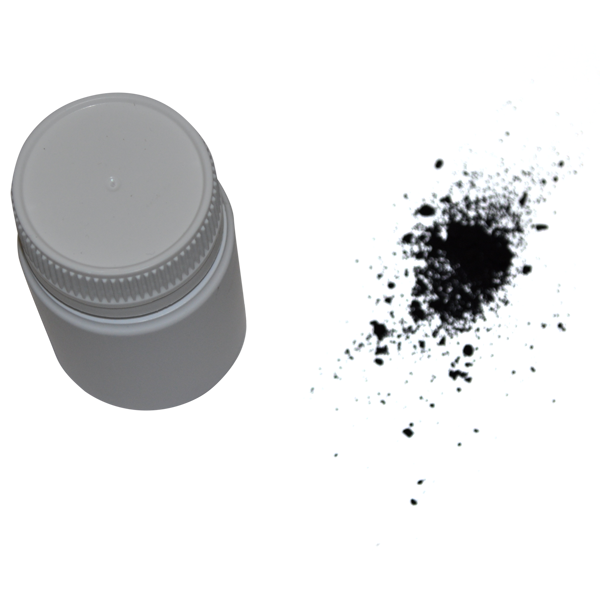- Activated Charcoal and cheesemaking ash is the same.
- This is a premium pharmaceutical grade activated charcoal/ash.
- It has an infinite shelf life.
- Store in a cool dry environment.
- Comes in a resealable plastic jar.
- Ash adds a great characteristic to any cheese that you make and is very easy to use across a variety of cheeses.
- It was traditionally used as a preservative for cheese (along with salt, drying, storing in dry straw) long before refrigeration and modern packaging methods were available.
- In the 21st century it is used to provide a traditional aspect to cheesemaking, plus it adds character to any cheese it is applied to.
- Ash can be used on the surface of any the cheese eg on fresh lactic cheese, on white mould cheese (it will make the white mould grow faster due to the alkalinity of the ash), sprinkled over curds during hooping, and even used on hard pressed cheese (eg Morbier traditionally uses ash as a layer within the cheese).
- The activated charcoal is made by heating coconut shells into a furnace at very high temperatures (much higher than a fire in a back-yard BBQ) and injecting the burnt ash with steam to create a porous highly ‘absorbent’ product.
- To add the ash to the cheese, there is no rule, but a few options are:
– add it directly onto the cheese, as little or as much as you want
it can be mixed with fine salt and then added to the cheese. If mixing ash with salt, mix 1-part ash with 10 parts very fine premium grade salt. This does not need to be accurate, just eyesight of the levels is fine. If using an ash/salt mixture regularly, then it may be easier to make up a separate container of the 1:10 ( ash:salt) mixture and store it as a ready, made up mixture.
– Cut out a paper stencil, place it over the cheese, sprinkle the ash on then lift the stencil off to see a pattern left on the cheese
- If adding ash to cheese that has just being hooped (or only half of the cheese is in the hoop) it will give you a black line in the centre of the cheese. It is recommended that only 100ash (not a salt/ash mixture) is used this way. Some ash will ‘bleed’ over the side of the cheese but that is usual.
- If adding ash to the surface of a cheese very gently sprinkle it straight from the container. Be careful it may want to come out in big clumps. If you are ashing lots of cheese, consider using a similar device use to sprinkle chocolate powder onto cappuccino or a simple saltshaker.

